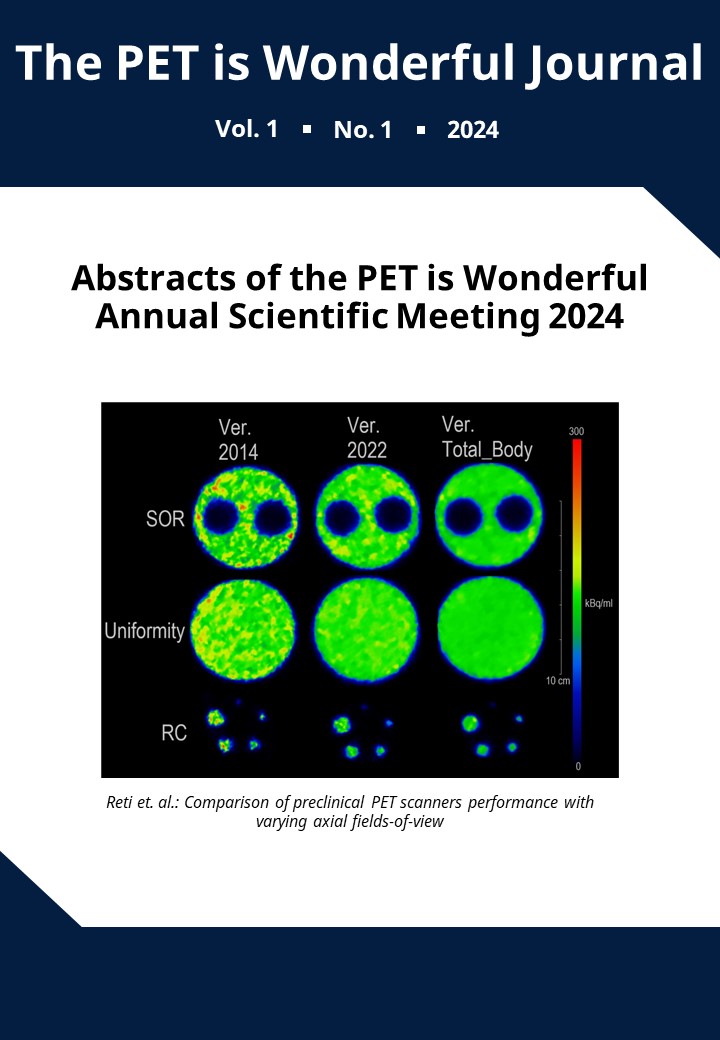Quantification of extra-cardiac damage following acute myocardial infarction using cis- and trans-4-[18F]fluoro-L-proline PET imaging
DOI:
https://doi.org/10.2218/piwjournal.9970Resumen
The preclinical surgically-induced models of myocardial infarction (MI) have been extensively utilised for studying the wound healing response in the mammalian heart. It is well-established that these invasive procedures induce marked acute systemic inflammation and adverse haemodynamic derangements, which can result in extra-cardiac tissue injury and remodelling; however, the extent of this has not yet been robustly characterised. Here, using a rat permanent coronary artery ligation (PL) model of MI and the cis- and trans-4-[18F]fluoro-l-proline positron emission tomography (PET) probes, targeting active misfolded and triple-helical collagen biosynthesis, respectively, we conducted an exploratory time-course analysis of the associated extra-cardiac tissue remodelling post-injury. Our results showed an increased cis-4-[18F]fluoro-l-proline PET signal in the liver (P = 0.02; two sample t-test) and lung (P = 0.03; two sample t-test) at the acute day 7 timepoint in the MI group compared to the Sham group (n = 3-6), which was not apparent at the later timepoints (days 14, 28, and 84). Ex vivo quantification of the deposited collagen in extra-cardiac tissues using Sirius red histochemical staining and the total hydroxyproline assay validated the apparent time course trends observed with [18F]fluoro-l-proline PET. These findings suggest that the liver and lungs are susceptible to acute injury in the rat PL model of MI and align with numerous clinical reports of extracardiac injury in MI patients. Moreover, our results highlight the suitability of [18F]fluoro-l-proline PET as a systems-based imaging technique for investigating active collagen biosynthesis across multiple organs.
Descargas
Publicado
Número
Sección
Licencia
Derechos de autor 2024 Angus Jacobs, Victoria J M Reid, Mark G Macaskill, Kalyani Pandya, Carolos Alcaide-Coral, Timaeus E F Morgan, Andrew Sutherland, Adriana A S Tavares

Esta obra está bajo una licencia internacional Creative Commons Atribución 4.0.





